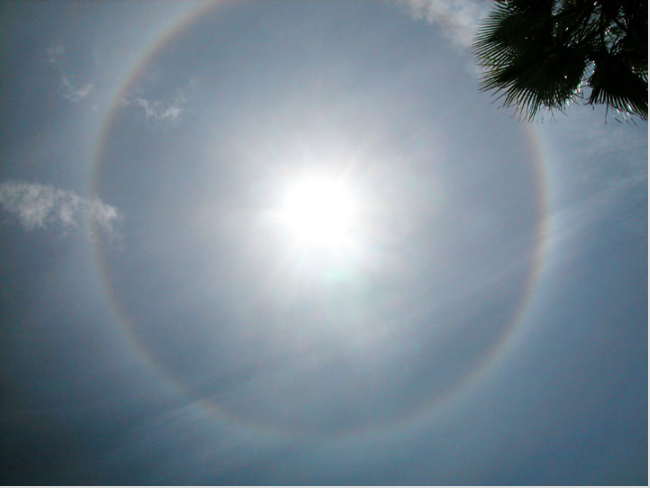22 degree halos? Florida
Exploring the Phenomenon of 22-Degree Halos in Florida
Have you ever looked up at the sky and noticed a stunning circular halo around the sun? This captivating atmospheric phenomenon is known as a 22-degree halo. While it may seem like a rare occurrence, these halos can actually be observed in various locations, including the sunny state of Florida. In this article, we will delve into the intricacies of 22-degree halos, exploring their characteristics and how they can be distinguished from similar atmospheric optical phenomena.
When observing a halo, one might wonder if it is truly a 22-degree halo or perhaps a different type, such as a circumscribed halo. In Florida, where the sun can be quite high in the sky, determining the exact type of halo can be challenging. The distinction between a 22-degree halo and a circumscribed halo becomes blurred when the sun is nearly overhead. However, there are certain characteristics that can aid in identification.
To differentiate between these two types of halos, one can look for additional halos present in the sky. For instance, the presence of a small parhelic circle inside the halo or an infralateral arc lower in the sky suggests the existence of horizontal column crystals and indicates a circumscribed halo. On the other hand, the absence of these features does not definitively confirm a 22-degree halo. Therefore, the identification process remains open to interpretation.
In terms of visual appearance, circumscribed halos tend to exhibit slightly sharper and more intense colors compared to 22-degree halos. These variations in color intensity can be mesmerizing to witness, adding to the allure of these atmospheric displays. However, it is important to note that the exact colors and intensity may vary depending on atmospheric conditions and crystal composition.
Now, let's take a closer look at the science behind these awe-inspiring halos. The formation of a 22-degree halo involves the interaction of sunlight with ice crystals suspended in the Earth's atmosphere. These crystals act as tiny prisms, bending and refracting sunlight to create the halo effect. The specific orientation and shape of the ice crystals determine the angle at which the halo is formed, giving rise to its characteristic 22-degree radius.
It is fascinating to note that 22-degree halos are not exclusive to Florida; they can be observed in various parts of the world. These halos are a result of the common presence of ice crystals in the atmosphere, which can occur in diverse climatic conditions. Therefore, whether you are in Florida or another location, keep an eye on the sky for these captivating displays.
In conclusion, 22-degree halos are a captivating atmospheric phenomenon that can be observed in Florida and beyond. While distinguishing them from circumscribed halos can be challenging, careful observation and the presence of additional halos can provide clues. The intense colors and distinct formation process add to the allure of these optical displays. So, next time you find yourself under a clear sky, don't forget to look up and appreciate the beauty of a 22-degree halo.

22º Halo?
Imaged 17th May '02 in Southern Florida by Tricia Tie-Shue.
The sun was nearly 80º high and the halo could therefore be a circumscribed halo rather than a 22º.
The two are difficult to tell apart when the sun is nearly overhead. The circumscribed halo has slightly sharper and more intense colours. Also, look for other halos to help identify what crystals are in the sky. A small parhelic circle inside the halo or an infralateral arc lower in the sky would indicate that horizontal column crystals were present and that the halo was a circumscribed halo. There is no sign of a parhelic circle in this image but the case remains open!
©2002 Tricia Tie-Shue, reproduced with permission.
Note: this article has been automatically converted from the old site and may not appear as intended. You can find the original article here.
Reference Atmospheric Optics
If you use any of the definitions, information, or data presented on Atmospheric Optics, please copy the link or reference below to properly credit us as the reference source. Thank you!
-
<a href="https://atoptics.co.uk/blog/22-degree-halos-florida/">22 degree halos? Florida</a>
-
"22 degree halos? Florida". Atmospheric Optics. Accessed on April 19, 2024. https://atoptics.co.uk/blog/22-degree-halos-florida/.
-
"22 degree halos? Florida". Atmospheric Optics, https://atoptics.co.uk/blog/22-degree-halos-florida/. Accessed 19 April, 2024
-
22 degree halos? Florida. Atmospheric Optics. Retrieved from https://atoptics.co.uk/blog/22-degree-halos-florida/.